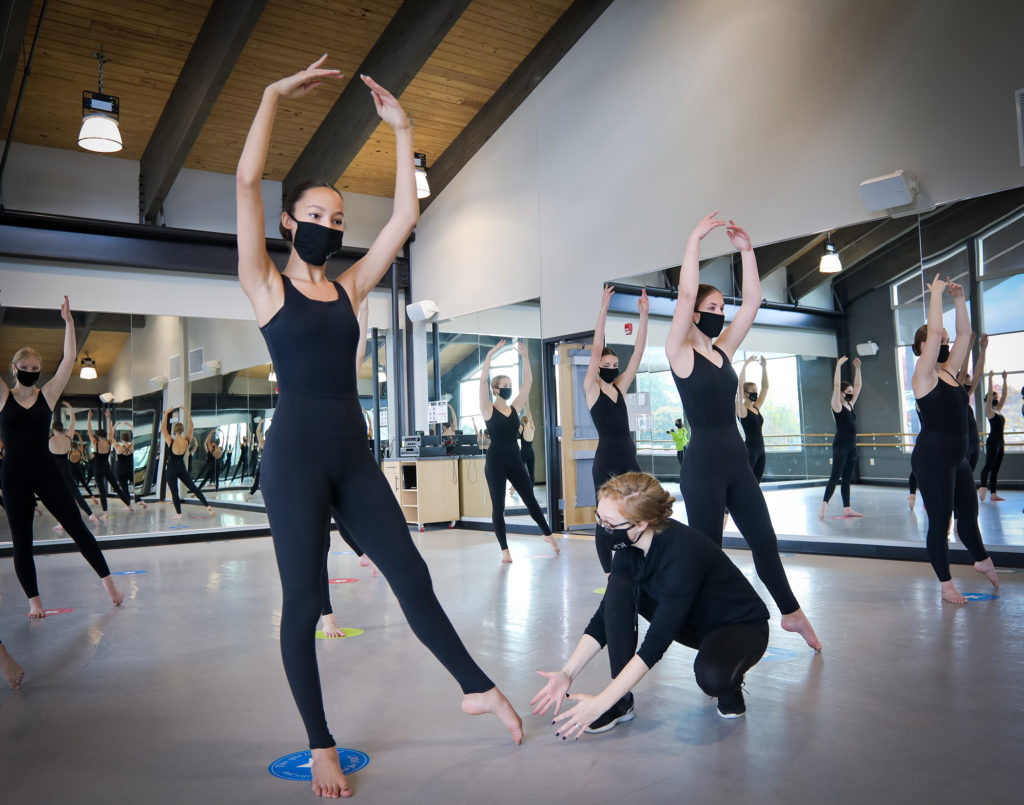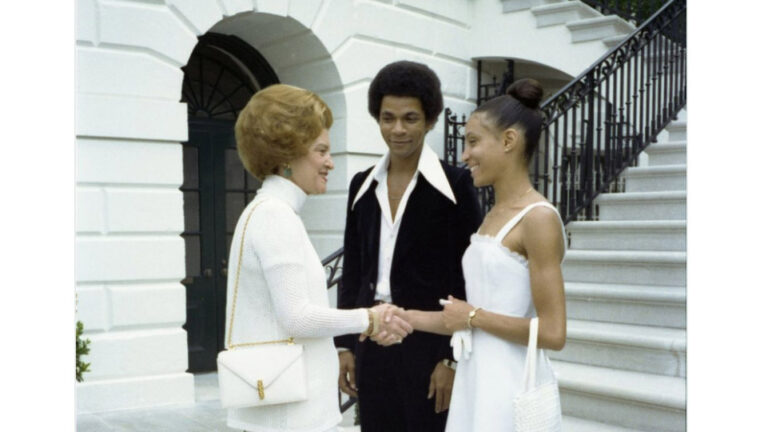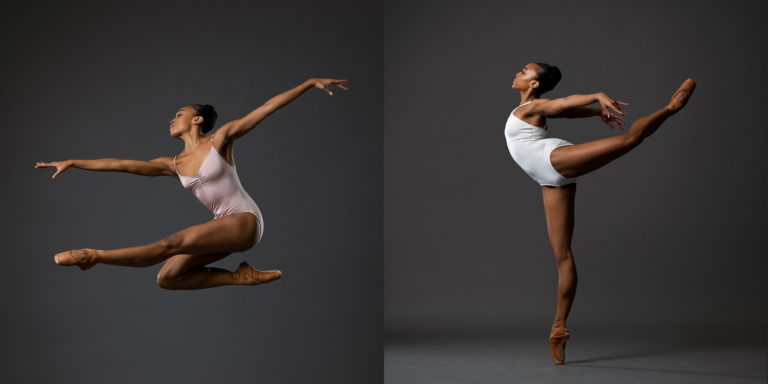
After months of masks mandated for both students and teachers in the studio, Misty Lown, recently gave parents the option of having their kids be unmasked while onstage for her studio’s holiday showcase.
“I looked at the stage and I’m like, ‘Oh, my gosh—the kids don’t smile! What is happening?’” she says. “They have not had the experience of looking in the mirror and smiling, and they don’t see it from their teacher, either. So much of early childhood development is mirror neurons. They missed all of those facial cues during a very important part of their development.”
While the science is still out on the effects of mask-wearing on children’s social development, it’s clear that what Lown noticed in her students’ performance is just one of the many impossible-to-foresee consequences of the COVID-19 pandemic and everything that has come with it.
Between the dance-education–specific changes in students’ lives, like online learning and social distancing in the studio, and the many ways the pandemic has affected students outside of dance—including those who have been touched by the virus themselves, or are one of the many who experienced the uptick in anxiety, depression, eating-disorder relapse and other mental health issues reported in the past two years—dance students are in a very different place than in March 2020, both as dancers and as humans.
Though it’s too soon to tell the full extent of the pandemic’s impact on dance students’ development, it’s safe to say that it has indeed been major. Dance Teacher asked two studio owners and a child psychologist what they’ve noticed thus far as dancers have returned to the studio.
Back to Square One
How much online training and pandemic-induced lapses in training have impacted dancers’ growth from a technical and artistic standpoint largely depends on how much their COVID-19 dance experiences were able to mimic what they were doing before the outbreak, says Grace Mayfield, owner of Hamilton Academy of the Arts in Lafayette, Louisiana. Did their home dance setups allow them to actually dance? Did they maintain the same volume of classes? How long were they actually online?
Mayfield says that for younger students who didn’t yet have a solid foundation before the shutdown, her faculty had to go back to basics in fall 2020 when in-person classes resumed, doing an in-depth review of what students had learned prior to the pandemic. One of the biggest setbacks has been for students who were on track to get their pointe shoes pre-pandemic, she says, many of whom still haven’t been able to advance to pointe.

The Social and Emotional Impacts
What is perhaps more stark and long-lasting than any setbacks in technique has been the way the pandemic has traumatized children and adolescents too young to be able to fully process what they’ve been through, says Lown, who owns Misty’s Dance Unlimited in Onalaska, Wisconsin, and is the founder of the studio affiliation program, More Than Just Great Dancing. Dance teachers were on the front lines of seeing students’ trauma responses to the pandemic, she points out: For many students, dance was their first activity after lockdown, as many dance studios were able to reopen before schools and other activities started back up.
Both Lown and Mayfield immediately noticed a sense of fear and caution among younger students, who, perhaps surprisingly, they say were the most stringent about maintaining social distancing. Mayfield says she’s also noticed an uptick in unexcused absences, and a lack of focus, confidence and motivation in some older students as they’ve returned to the studio. “They’re settling for things that prior to COVID I feel they would not have settled for,” she says.
Lown believes that students are shielding themselves from disappointment by not allowing themselves to get truly invested. “We’re not seeing the traditional enthusiastic response for events like competitions and recitals,” she says. “I think it’s a self-protection of the heart, because things continue to change, and they’re just not sure that it’s actually going to happen. So we keep telling them: We are making plans for spring recital, we are making plans for competition, and if we get there and it’s something different, we’ll make new plans.”
There’s a sense of grieving over missed opportunities, and frustration with restrictions on the social aspect of studio life, says Mayfield, especially for older students whose final few years of dance look nothing like how they had imagined them. Dr. Christina Donaldson, a psychotherapist who works with dance students, says that the pandemic has also created tension among students whose parents may have different rules about letting them participate in a competition, for instance, or hang out with fellow dancers outside of the studio. “There’s this natural jealousy and othering that happens,” she says.
A Changing Dance-Studio Demographic
It isn’t just the masking and social distancing that have made dance studios look different in these past few years, it’s the makeup of the students themselves. Lown says she’s seen a trend throughout North America of older, more serious students returning to the dance studio, but younger student enrollment taking a more serious dip, which she attributes to parent caution. Mayfield agrees, having lost the vast majority of her young students between spring and fall 2020 (though she’s regained some of this population, mostly in new students).
What this will mean long-term is difficult to say: Hopefully, it won’t be a harbinger of lower dance enrollment in future years, though it could indicate a generation of students whose serious dance training begins later than has been typical. While younger students have started to come back too, many studios’ overall enrollment is still not quite back to pre-pandemic numbers: Lown’s studio is at around 80 percent enrollment, and Mayfield’s is around 95 percent.

How to Support Your Students
Dr. Donaldson says that just as many adults have seen their priorities change throughout the pandemic, students may be returning to dance with new interests and new needs. One common shift she’s seen is students’ desire for clearer boundaries, and a more balanced life. She recognizes that this puts teachers and studio owners in a difficult position, as it may manifest as what appears to be a lower commitment to dance. The best thing studios can do, she says, is have compassion for students and create as supportive an environment as possible.
One way to do this: “Give kids an opportunity to talk about their experience,” says Dr. Donaldson, “of virtual learning, of how weird it is, of how we have to wear masks—just discuss it and be open and honest about it.”
Make sure you’re taking care of yourself, too, says Lown, so you aren’t pouring from an empty cup. And know that your job “isn’t to fix anything,” says Dr. Donaldson. “It’s just to listen and to be curious about their experience. Validate their feelings—validation goes a really long way.”





